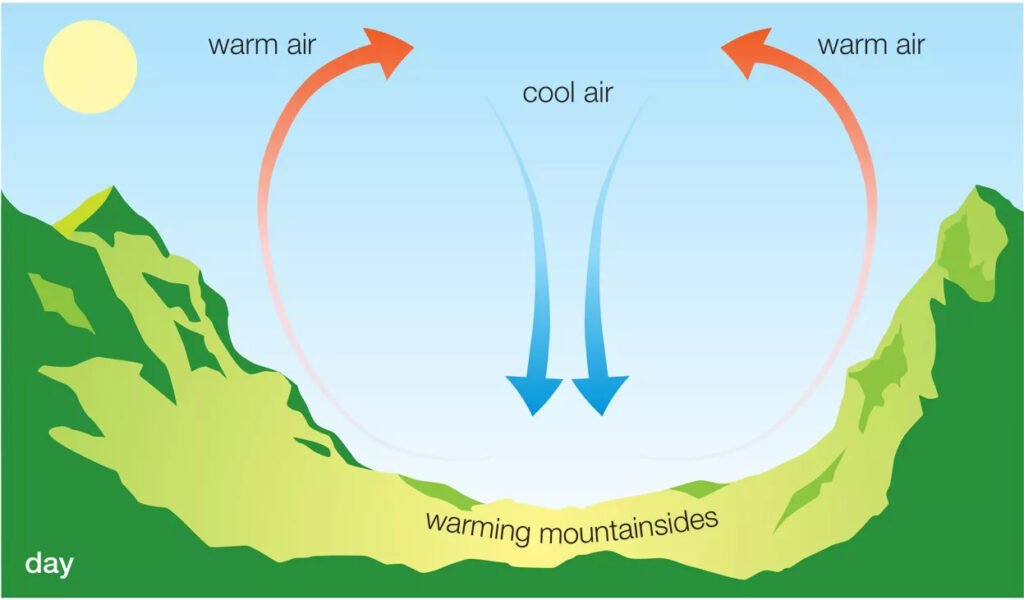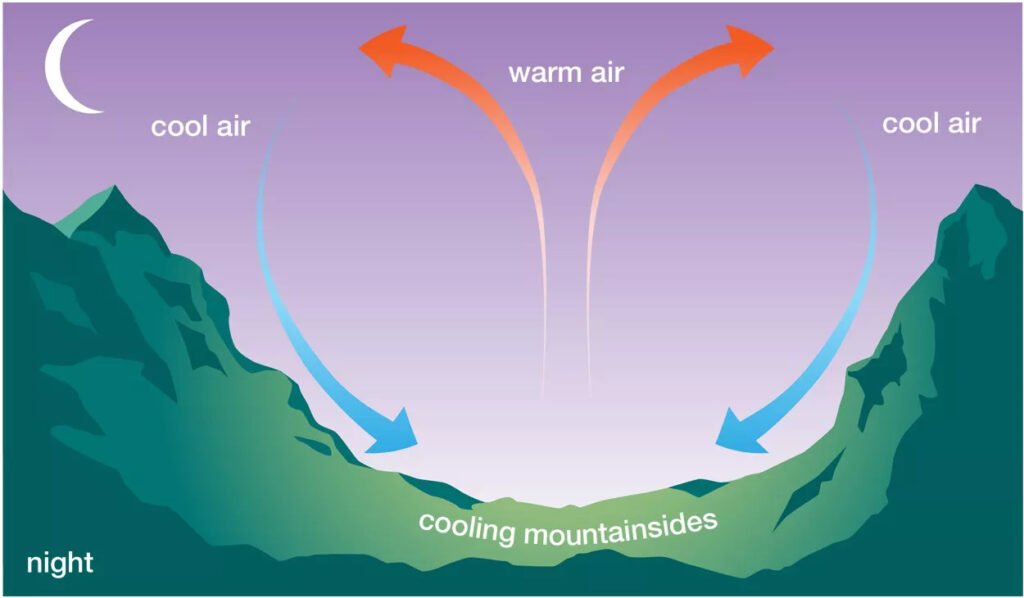Airflow in industrial or residential ventilation systems works on the same basic principles. However, learning the engineering involved can be quite complex due to the size of most industrial buildings and the rigorous safety requirements that must be met within them.Nevertheless, it’s not particularly difficult to understand the importance of reliable industrial ventilation systems if you keep these airflow basic principles in mind. Let us take a look at them now.
Terms and Principles Related to Airflow
In order to understand how air moves within a ventilation system, it is essential to define some terms related to airflow.
Airflow
Airflow is essentially the movement of air. In HVAC, it can also mean measuring air flowing through your heating and air conditioning system.Air is a fluid, just like water. It too flows from one area to another due to a pressure difference.Outdoors, air flows from higher pressure to lower pressure. The wind is air moving from an area of higher pressure to a place of lower pressure.
In a duct, air also flows from higher pressure to lower pressure. A fan or blower creates higher pressure. At the open end of the air duct, the pressure is lower, so the air flows out.The pressure differential and system resistance regulate the amount of air that flows through a duct. The higher the pressure differential, the greater the air velocity and the greater the volume of air flowing out of the air duct.
Friction
Friction is a resistance that slows the flow of air. The airflow creates friction when it rubs against the side of the duct, and friction creates resistance to the airflow.
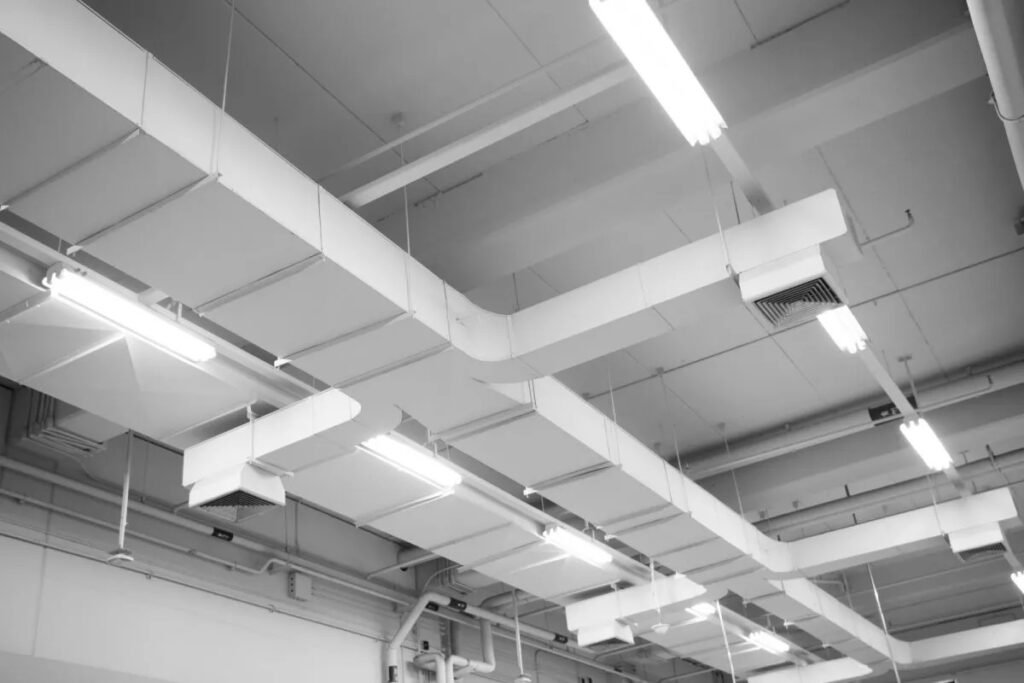
As you might imagine, air blown through a 1.8 km (1.1 mi.) air vent with several turns would encounter more friction and, thus, a more significant airflow resistance than in a 10 m (32 ft.) straight air vent.
Airflow Velocity
Air Velocity is simply the speed of air in a given direction past a fixed point. It is measured by calculating the pressure produced by the motion of the air.Air velocities affect the rate of heat transfer between that air and adjacent surfaces. The higher the velocity of air moving across a surface, the higher the heat transfer.
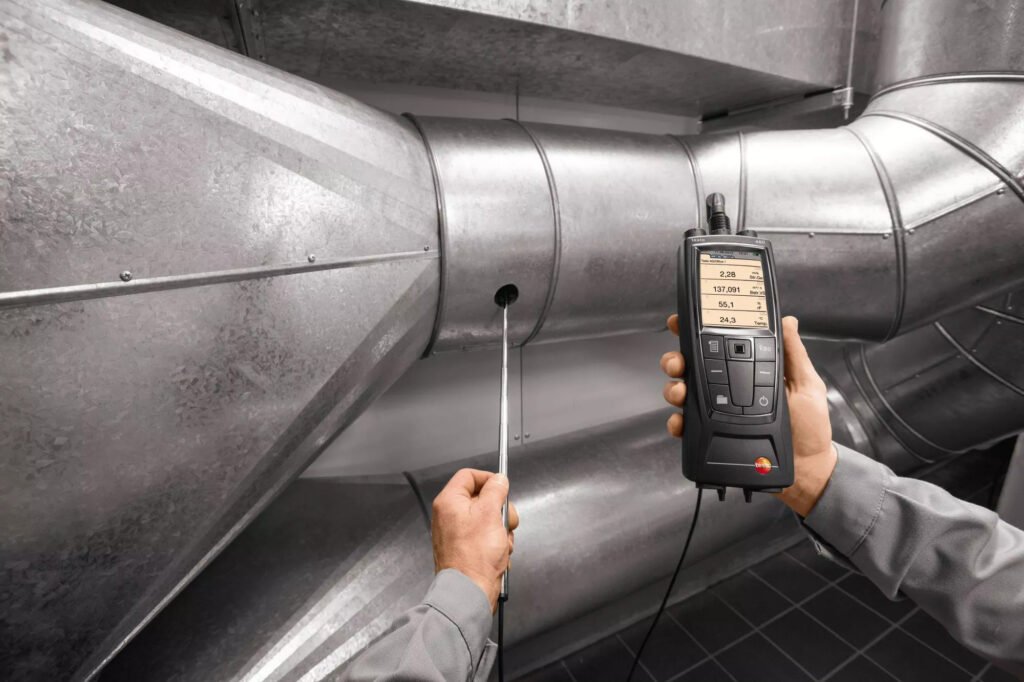
In HVAC applications, it is helpful to understand the methods used to determine air velocity. Air velocity (distance traveled per unit time) is often expressed in feet per minute (FPM) or meters per second (m/s).
Air Volume
Air Volume is, basically, the amount of space that the air occupies.If you multiply the air velocity by the duct area, you can determine the volume of air flowing past a point on the duct per unit of time. Air Volume flow is generally measured in cubic feet per minute (CFM).
Blowers and Fans
Both blowers and fans are used for cooling and air circulation either in indoor areas, HVAC systems, or inside industrial machines as well as electronic equipment.

A blower is a mechanical electric or gas-powered device that uses centrifugal impellers to push air through the ventilation ducts to increase airflow speed and volume. They tend to consume more energy than fans.

A fan, also an electric or gas-powered device with blades for rotation, pushes air through the ventilation with medium airflow speed and volume. They generally consume less electricity than blowers.
Diffuser
A diffuser is used to spread the airflow around a space to increase the air’s impact area. Instead of air pouring directly out of a duct onto the space below, it is comfortably spread.
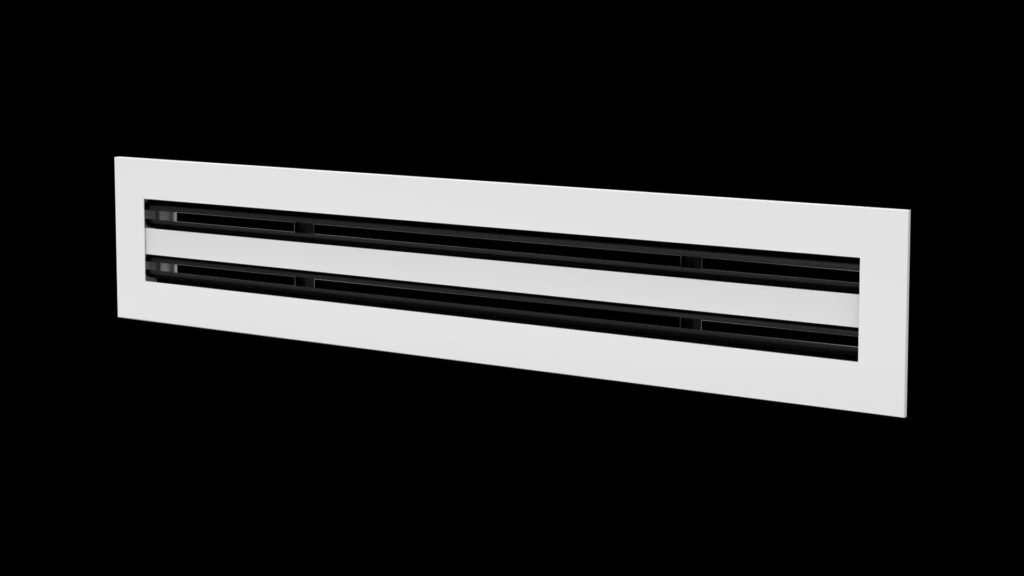
Damper
A damper is used to stop the flow of warm or cool air into a room.
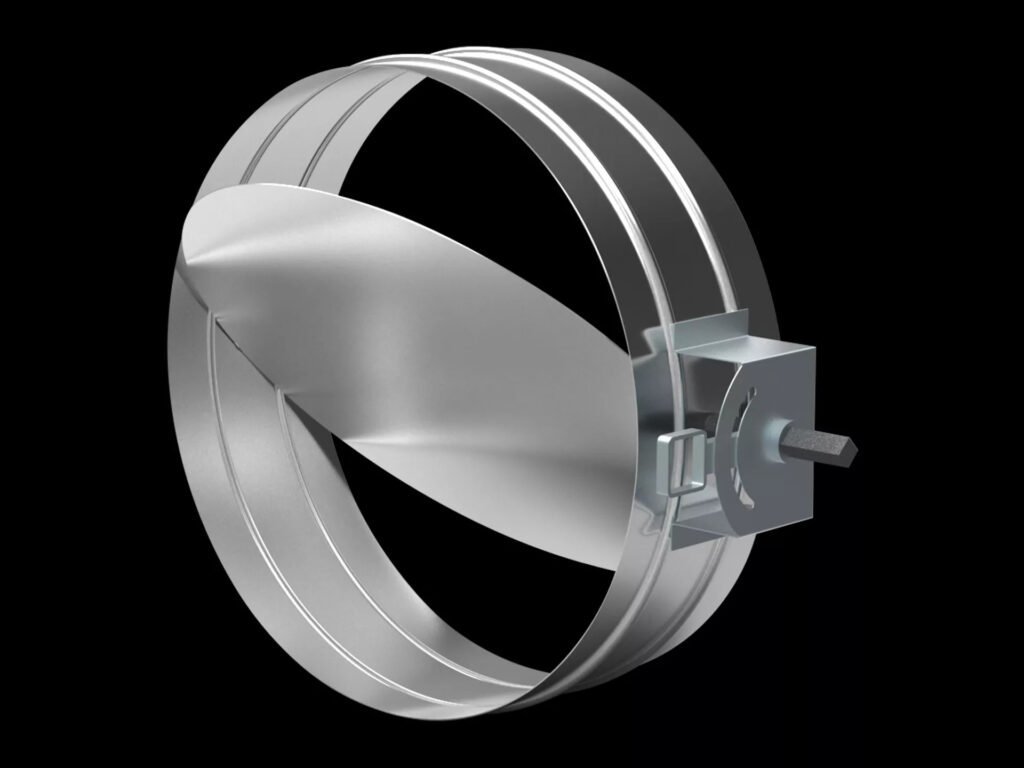
Actuator
Actuators and other components can adjust air distribution equipment (ADE), such as dampers, to regulate temperature and save energy.
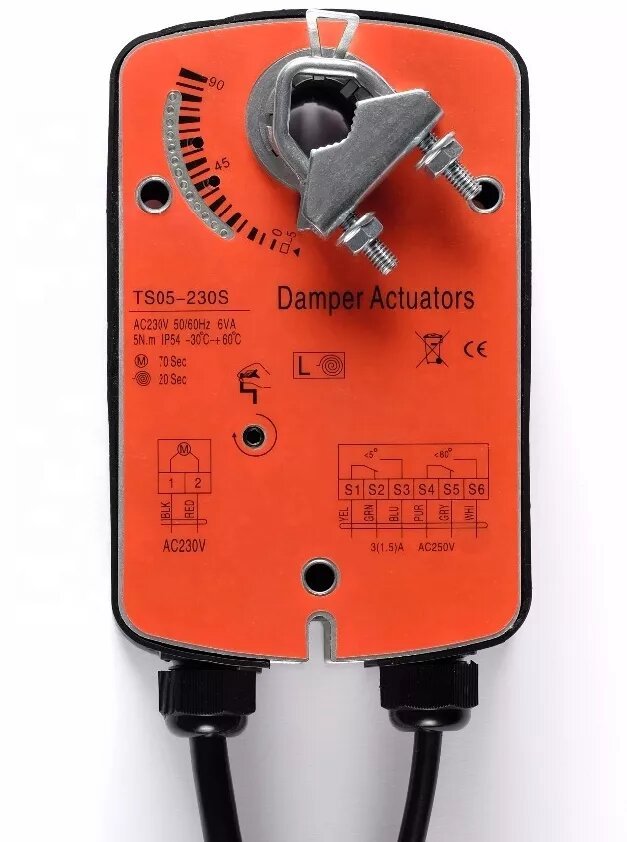
Pressure
Pressure is the force per unit area exerted on a body by a liquid or gas. In the case of atmospheric pressure, for example, most of the pressure comes from the weight of air.
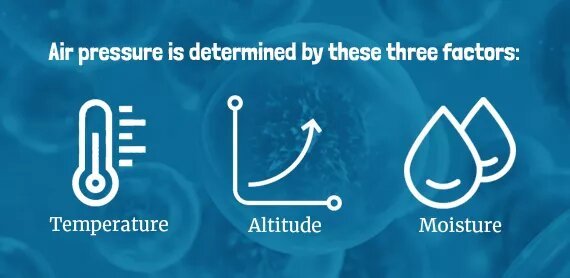
In other words, the air we live in is comparable to the ocean: a deep-sea diver wears a special suit at great depths because the deeper you go, the higher the water pressure. Similarly, we live at the bottom of an ocean of air, where at lower altitudes, the air pressure increases, and at high altitudes, the air pressure decreases.
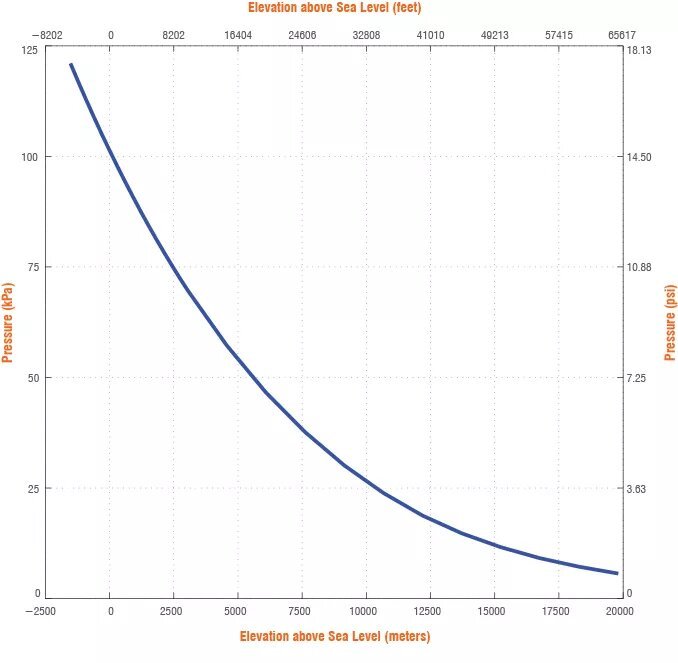
The pressure at sea level is 14.7 PSI (Pounds of force per Square Inch). We do not feel this pressure because the internal pressure of our body is the same as the pressure of the atmosphere. Every object on Earth is affected by atmospheric pressure in this way, including HVAC systems. An HVAC system uses atmospheric pressure to circulate warm and cool air throughout the building to control your environment’s temperature and air quality. Pressure is measured to ensure that airflow is balanced and to deliver the correct amount of air to each zone.
Occupied zone
The Occupied Zone shall be between the floor and 1.8 m (6 ft) above the floor and more than 1.0 m (3.3 ft) from external walls/windows or fixed heating, ventilation, or air-conditioning equipment and 0.3 m (1 ft) from internal walls.
Displacement Ventilation
This is an air distribution strategy in which conditioned outdoor air deploys at low velocity from supply air diffusers located near the floor and extracted above the occupied zone by return air vents.

Displacement ventilation uses innovative technology based on three main principles: Supply/Return Air, Buoyancy Effect, and Stratification.
Supply/Return Air
Supply air is the conditioned air supplied throughout the building. First, Supply Air enters directly into the occupied zone at a low velocity. Its temperature is slightly cooler to displace the warmer polluted air already present in the room. When supply air fills a room, you must remove an equal amount of air from the room. This removed air is called Return air. This air travels back to the central air system for reconditioning.
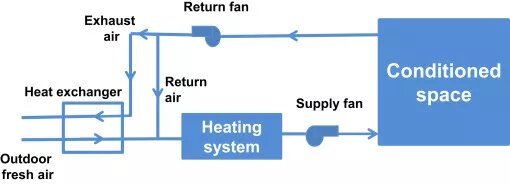
The Buoyancy Effect
Heat and humidity contain denser materials than air. Once cool air is supplied in the lower part of a room, the warm contaminated air is lifted out of the breathing zone, allowing clean air to take its place near the floor.
Convection Currents
Objects commonly found in rooms, such as people, computers, and lights, give off heat. Each heat source warms the surrounding air. This warm air rises away from the heat source to a return air vent, thus creating Convection Currents.
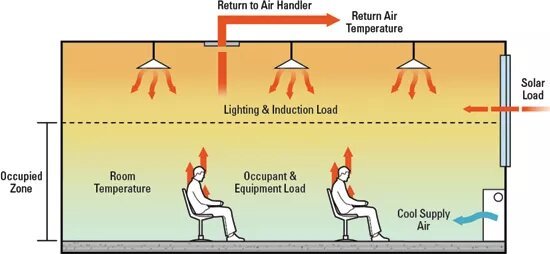
These currents, also known as thermal plumes, are responsible for the Buoyancy Effect that creates air circulation in a displacement ventilation system.
Stratification
Hot temperatures occur at the top of the room, where stratification comes into play. The air in a room splits depending on the temperature. Hot air rises while cooler air falls.
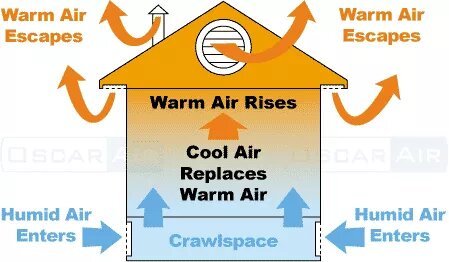
By introducing cool air at lower velocities than a standard mixing system, you can flood the lower levels with clean, cool air, pushing the dirty, warmer air higher than the occupied zone so it can be extracted from the return air vents.
Jet
A jet is a stream of fluid projected into a surrounding medium, usually from some kind of nozzle, aperture, or orifice. Just like water, the air is also a fluid.
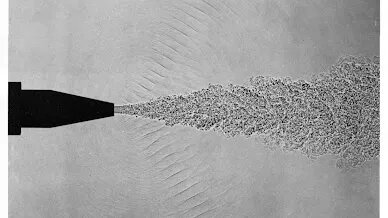
The Coandă Effect
To understand the Coandă effect, you need to think of airflow in a duct system as traffic on the highway. Transitions and changes in direction must be gradual and smooth at high speeds. If you suddenly block a lane of traffic, you will have a problem. Airflow behaves the same way in a duct system.

Named after Henri Coandă, who first described it while measuring the buoyancy forces of water jets, notes the tendency of a fluid jet (such as an aircraft) to deflect partially sideways as it emerges from an aperture if its exit is at an angle other than perpendicular to the surface immediately behind it.

The Coandă effect is generally only practical at angles with a tangent between the fluid flowing away from both sides simultaneously.

Square duct fittings destroy the airflow patterns and cause higher pressure drops across the duct fitting. The free area of the duct fitting is displaced by the air trying to make a sharp turn. The airflow needs more space to make that curve because of the turbulence created.
Conclusion
Knowing these terms serves a dual purpose: It helps engineers tasked with designing your facility’s ventilation system understand the function of the various devices, and it allows you to more easily discuss ventilation systems with contractors, architects, and anyone else involved in creating your commercial structure’s ventilation system.
Contact Us
Reach out to us on Facebook or LinkedIn and tell us which air distribution concepts you want to know more about. Or follow us on Instagram for a bite-size version of our blog.Would you like to know more about air distribution concepts? Contact us here with any questions you have. We look forward to hearing from you!


